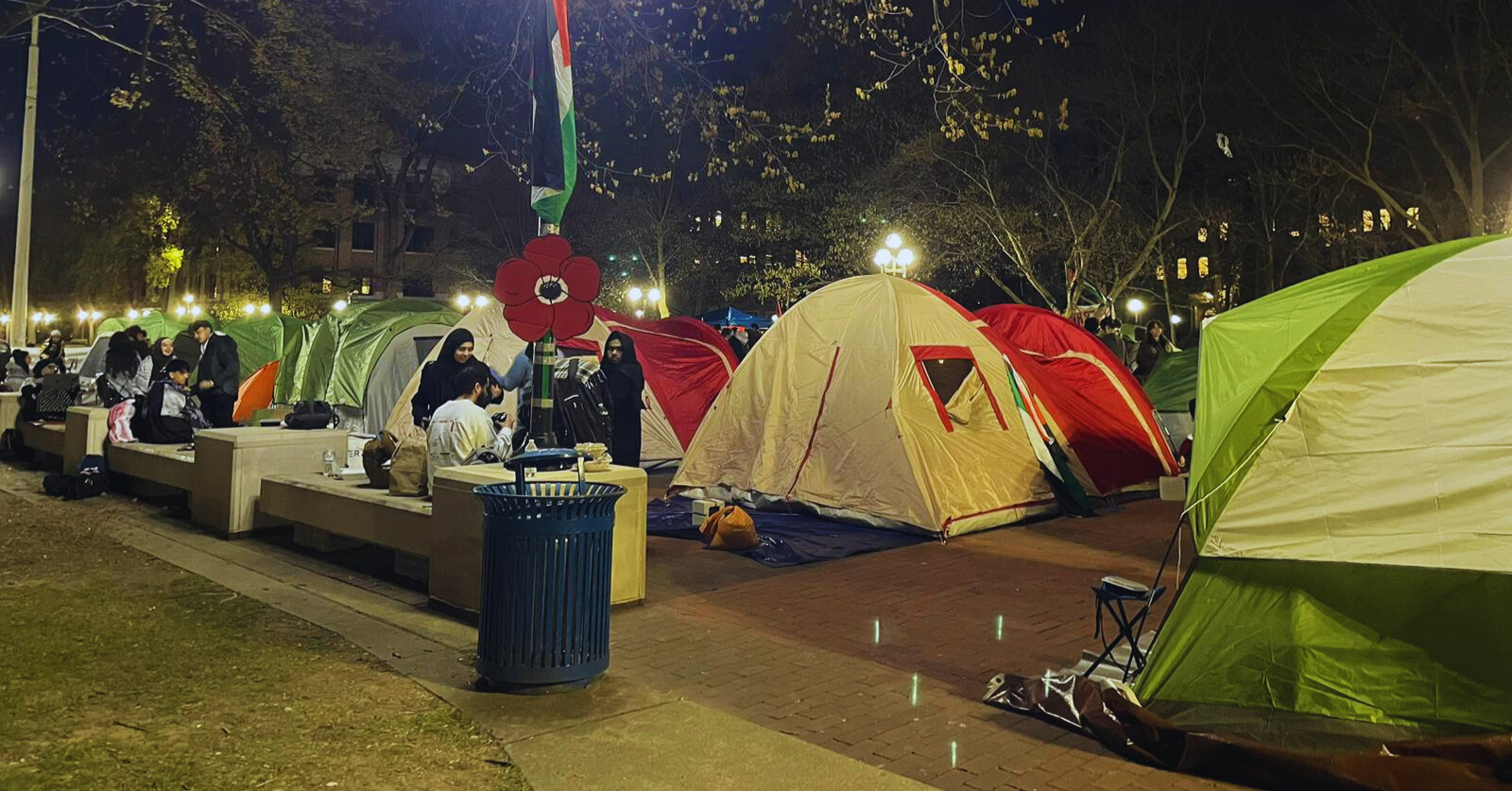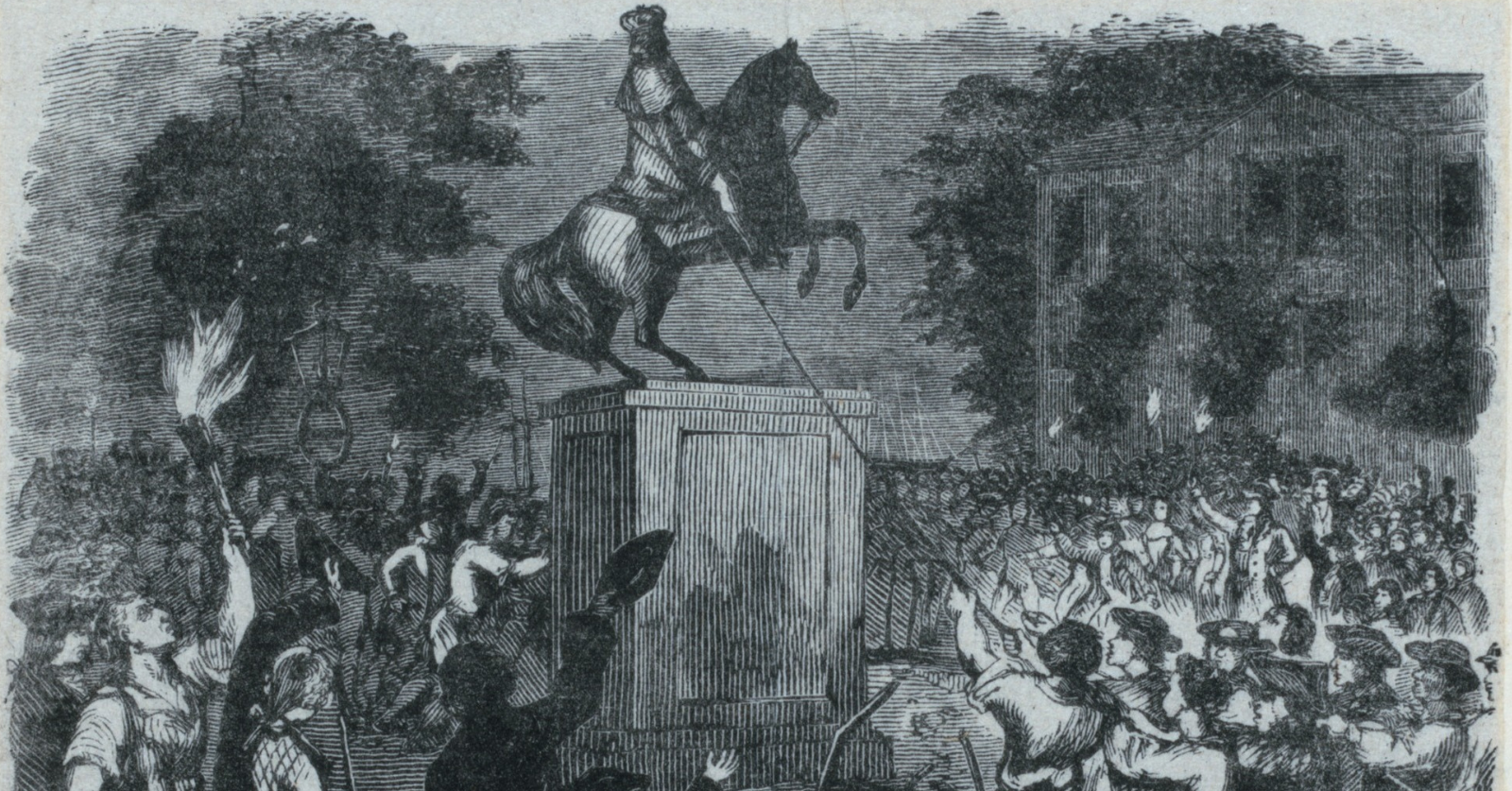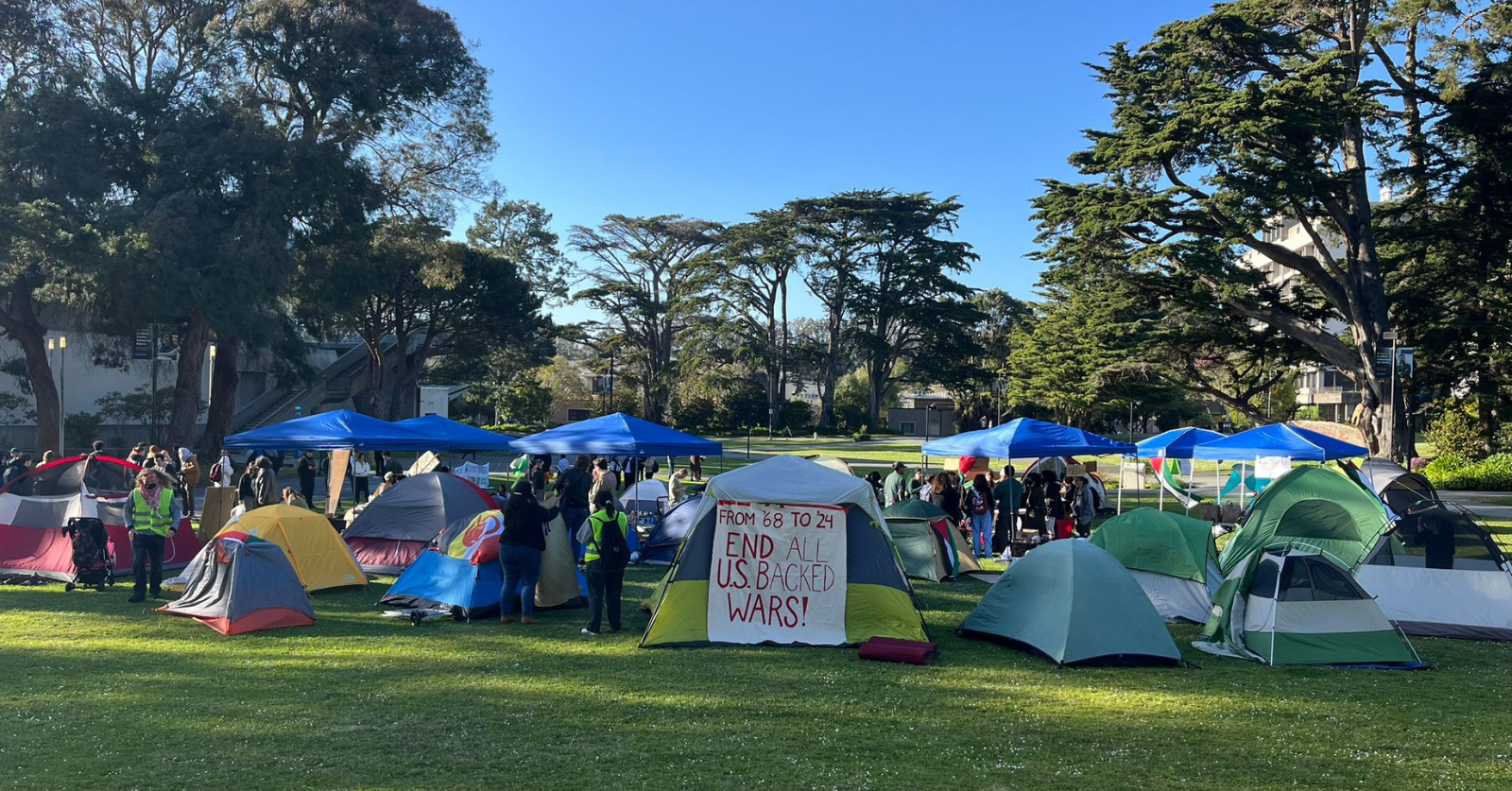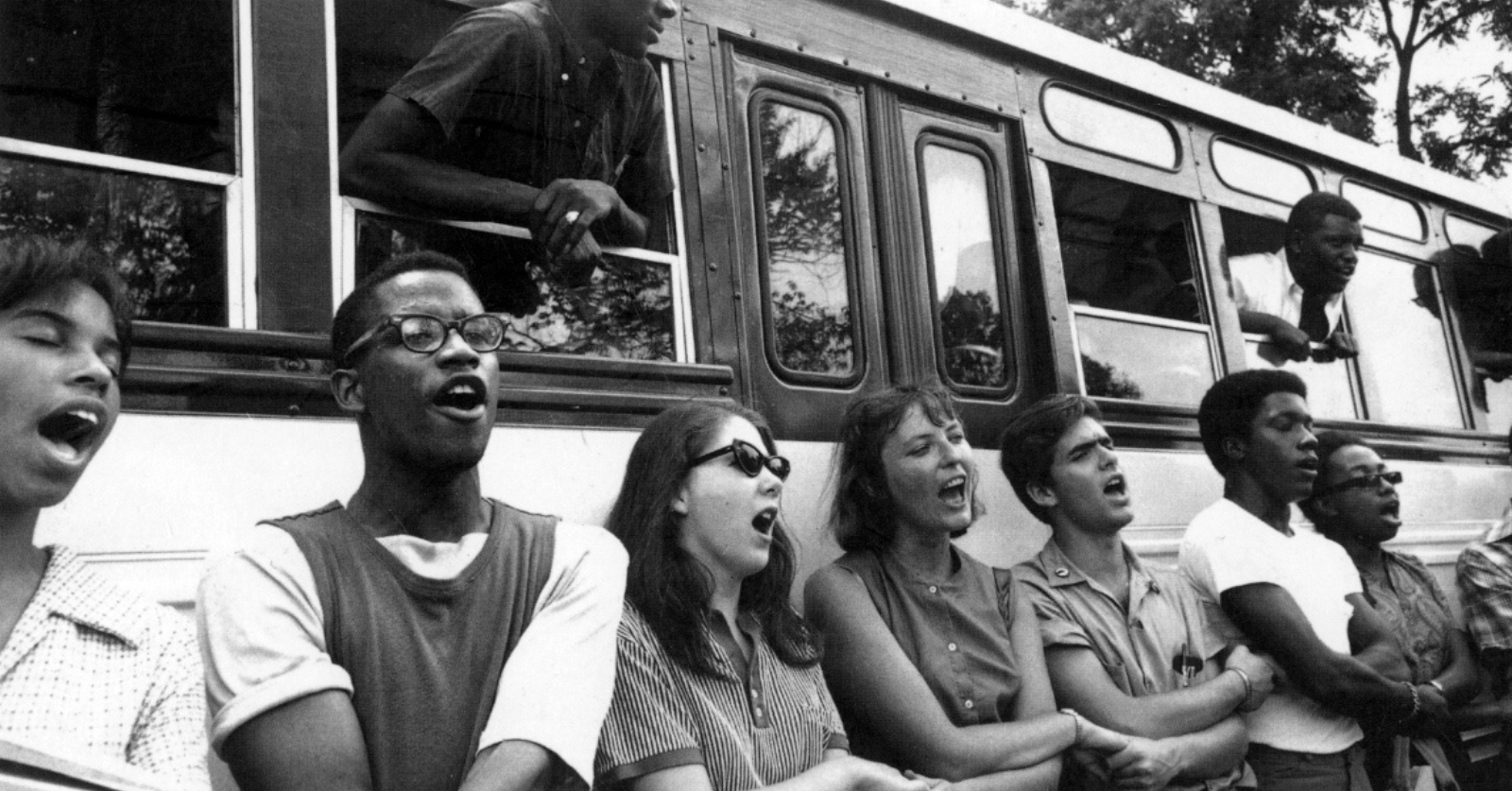Sparked by a pro-Palestine encampment at Columbia University, a wildfire is spreading to campuses across the world. At the time of this writing, student activists have set up tent encampments at over a dozen schools in the US, and videos are circulating of similar actions at schools as far as Brazil, Italy, and Australia. Young people everywhere are demanding an end to the war on Gaza, their schools’ financial and political support for Israel, and the repression of pro-Palestinian groups. Seven months into Israel’s US-backed genocide in Gaza, we are seeing an inspiring escalation of the movement for peace and justice in Palestine.
Many of the young people getting involved in the protests today only have a few years of organizing experience under their belts or are taking collective action for the very first time. The US has a rich protest tradition — including the civil rights, free speech, anti-war, anti-globalization, Occupy, and BLM movements — that today’s pro-Palestinian activists can draw upon. In this interview, we look to the recent history of student struggles for lessons to navigate this moment.
Cyn H.: Tell me about yourself and your experiences as a student activist at UC Santa Cruz.
Ben Mabie: I’m Ben. I am now active in the labor movement and in tenant organizing, and I’ve also been active in DSA. But I cut my teeth in the student movement, particularly at the University of California.
I arrived at UC Santa Cruz in 2011, the day before Occupy started, and was lucky to experience, in a whirlwind, the student movement and a much broader social movement. Almost immediately upon entering campus I got to meet people I continue to organize with and do politics with today. We were making weekly trips up to Occupy to enforce the building takeovers, port shutdowns, or big strikes taking place in Oakland. That radical ferment in the Bay consistently inspired us to go further than the usual kind of student advocacy that predominated amongst student activists before Occupy.
So coming out of Occupy, it was quite a big struggle to get students to organize in formal organizations, or even formal groups at all, because of the prevalence of more anarchist ideas about organization and about how to conduct oneself in the context of a movement. But a group of us realized we needed a more formal organization of students on campus, particularly because the local drivers of enthusiasm for Occupy, like the privatization of our university, only deepened in the years after, with tuition hikes and major contract campaigns for different kinds of campus workers. The University of California is the largest employer in the state of California. The struggles over labor were often quite intense, really robust. But students — whose own learning conditions were at stake in these fights — were often on the sidelines.
We developed a student group for two reasons. One, we needed to be in solidarity with workers because we recognized their shared exploitation had everything to do with the privatization of universities, which was impacting our services and immiserating students and putting us in debt. But we also knew that there needed to be a mass movement orientation to fighting on campus and fighting university administrators and statewide Democratic actors that were facilitating privatization. We needed student demands to connect and resonate with the demands of workers.
So we, in the course of a number of years, in close conjunction with rank and file union members as well as union leadership, did a series of hard pickets that shut down campuses. We occupied buildings, we did effectively curb and defeat tuition hikes, we curbed and defeated efforts to hike up our health care costs. And we also won pretty historic contract gains for many different types of workers at the University of California.
Cyn: Can you say a bit more about the movements you were involved with — specifically, what did they accomplish, and what were their shortcomings?
Ben: We did at least arrest privatization. There were, after our student movements, no longer any dramatic spikes in tuition, at least during my time there. And we also built up the infrastructure for campuswide solidarity with workers.
One thing that movements always accomplish is that they produce skilled, savvy, visionary organizers. They produce organizations and cohorts of people that will go on doing politics. Our movements are schools for people to learn how to be revolutionaries, and be really effective organizers. Some of the people I met in that context are people that I still do politics with today.
In terms of shortcomings: the students today have a much greater clarity about the role of organization and the different scales and levels of organization than we did, that we really struggled with: figuring out the relationship between our small activist groups and larger participatory structures like general assemblies, and broader fronts that involve lots of different student groups. Those things often bled together for us in ways that were not effective.
Sometimes we were really beset by questions about identity and intra-student animus on campus. Diverse movement organizations were smeared as being white, and our comrades of color were patronizingly — and racistly — called “puppets” of white organizers. These pressures on the movement inspired us to get a better grasp on the history of black radicalism in the United States, and encouraged us to develop relationships with off-campus groups representing diverse parts of the working class. We invited Boots Riley and the ILWU’s Clarence Thomas to the university to provide us with an alternate framework to anti-racist political struggle. But we sometimes lost confidence in our approach, sometimes got embroiled in inter-personal infighting. We were able to rebuff these attacks best when we were confident in our strategy to win and socialized that strategy with the broadest ranks of the movement. But when we were uncertain of our plan, or less confident in projecting it outwards, these criticisms could be supremely deflating.
We struggled with questions about durability and longevity, the ebbs and flows of enthusiasm for direct action. I mean, protests come and go. The question is, what kind of organizational infrastructure is left by the cohorts that went through those experiences together? Many of us who came through that movement are still quite close, politically and socially. But we did not always reproduce our student groups as successfully over time, as many of us graduated.
Cyn: What are some major lessons you learned from student organizing?
Ben: The primary thing is the central importance of student-worker relationships and alliances, of building a space to do politics together. If you’re starting an occupation, reach out to faculty, reach out to rank and file workers, those are relationships and alliances that will really help. (In the case of faculty especially, make sure to put them to work organizing in their departments, around petitions that support student demands, etc.) There was no student strike we conducted that didn’t involve coordination with rank and file leaders within existing unions on our campus to help ensure that they would respect our picket lines, and let us know if they were being directed to enter campus from another entrance. There was never a moment when we successfully won as students and students alone, even as our independent initiative and demands were essential.
You always want to invite workers across the various craft organizations on campus to join your assemblies, if not also join your inner core of organizers that are helping develop the infrastructure for the movement. Those political relationships really broaden the reach of your movements, they broaden the experience and perspectives of the movements, they make it clear where the points of leverage can be exploited by movements. And they can be transformative in terms of what movements can put on the table. Students can have this catalytic effect on other actors in the university. We should be helping set the stage for those encounters, by inviting workers to be thinking through their power with us and encouraging them to organize with us from the jump. We often had different kinds of workers–service, faculty, adjuncts, grads and researchers–in close coordination, even our core group of organizers. And that really made our actions more powerful and our thinking more sophisticated .
The other lesson relates to organizational form. One of the primary organizational forms of a lot of the social movements – this extended to campus movements a decade ago — was the camp and the assembly. These were, in some cases, radically democratic, anyone could show up and participate, there was no formal leadership, there was a representative body. The barrier for entry was really low. And it meant that these organizational forms had a wide surface area that made it possible for people to get involved in the movement in a range of different ways.
Now, the camp and the assembly did have its limits. We’re all familiar with “the tyranny of structurelessness.” It often meant the loudest and most charismatic people could throw around a lot of weight, and could effectively concentrate political discussion around themselves, to disorganize the movement. We often had organized groups of activists, of cadre — our movement groups like Autonomous Students — planning actions and would then launch big assemblies. But we did not do enough, I think, to continue coordinating with one another in that larger assembly context, and so it left the execution of certain tasks related to the movement to sometimes unwieldy bodies of lots of people. I think these different layers of organization — the cadre group and the assembly — can probably work well in combination, with one space being a broad, democratic place for onboarding into the movement, for deliberation and decision making that encourages more people to participate, and with another organized around people you trust trying to articulate a shared vision for winning that you can test out with the broad ranks of fellow students and campus workers that you’re in movement with. The latter space is where a lot of deliberation, planning and reflection take place.
You have assemblies on a common daily cadence, say at 5 p.m. or 7 p.m. every day on campus by the plaza. It provides a rhythm to the life of the movement. If someone wants to know where to plug in, it’s really easy to tell them where to come. And those are meetings where people can get the basic frame of the movement, they can hear speakers, they can engage in political education, they can engage in decision making about what direction the movement should take. It creates opportunities to socialize the escalation plan, not just amongst a group of small activists, but even wider and wider groups of students and campus workers. And finally, those assemblies provided easy on-ramps for people on the outskirts of your organizer bullseye to take on tasks that helped build and deepen the movement that they otherwise wouldn’t get if you didn’t have a space for large group discussion.
Cyn: What are similarities and differences between your experiences in the student movement and what’s happening today?
Ben: The struggle against austerity, privatization and exploitation on campus is somewhat different from the kind of demands that are happening now, over divestment and disclosure and extricating our universities from their ties with Zionist occupation. They are similar for a couple of reasons, though, in that students still have the same structural and political opportunities that we had then. One thing we learned in the course of our student movement is that we could effectively shut down campus with some hard pickets of students working in conjunction with workers. Typically what we learned is that no matter if you took over one, two or three buildings, it was not sufficient to shut down campus. It was easy for people to do their jobs remotely and for classes to move. And this is even more true now, given how COVID has made our classrooms and our offices so conducive to remote work.
Student work because of its political clarity, because of its position of principle, because of the willingness to take on risks, can be a catalyst or spur for other social actors, other constituencies, other parts of the class, to begin to act in ways that may have more structural leverage. At campuses like Columbia we are seeing that the student occupation itself doesn’t shut down campus, but it can spur other actors into considering the withdrawal of their labor, the such as a walkout from the faculty senate or strikes from grads or researchers, actions that do meaningfully shut down the operation of the university and provide ever greater leverage for those movements to succeed.
Cyn: What advice do you have for young activists organizing at their schools today?
Ben: The political opportunity opened up by a moment that we’re in does not last forever. It’s easy to see that in the context of campus politics, because you guys will all be going home within the next few weeks, few of you will still be on campus. Sometimes we only have a few moments, a few days, a week to let things take hold, to begin to escalate before that opportunity closes
But by the same token, there are opportunities for organization to leap forward, for us to reach much broader ranks of students and workers than we might otherwise reach. But we should not think about our political work only in terms of the escalation which is possible in the next couple of weeks. We will not defeat Zionism by the end of the semester; that’s going to take time, and that’s going to take the maturation of our organizers, it’s going to take the range of relationships they have on campus, the depth of trust that they have in one another, the level of sophistication of the movement’s analysis. It will also take strong ties to different kinds of workers on campus and off.
That’s one thing to hold in mind: both the urgency of the next couple of weeks with also the long-term perspective about what it’s going to take to win.
Also, don’t think it’s really easy to build a movement. In a campus environment, it’s easy to forget the organizing fundamentals. A lot of organizers have been cutting their teeth in labor contexts or through campaigns with YDSA. And some of the skills that we learn there should also applied to a student context: that if people are disengaged, that’s not because they’re apathetic, that’s because we haven’t organized them, or provided them with opportunities to get involved around issues they care about, or equipped them with an understanding of how their own activity can help contribute towards the execution of a plan to win.
In the context of a college campus with a developed activist culture, it might be easy to mobilize even a few hundred radicals for a disruptive action — doing so can feel quite powerful, even it can feel really big, but it’s important to use this moment to make systematic opportunities for reaching out to wider groups of students across campus, through dorm storms, through systematic stump speeches at the start of lectures across campus and through other creative methods of outreach. That’s something which it’s easy for campus organizers who are flooded immediately with the activist layer on campus to forget — that outreach is crucial to the growth and success of the movement.




